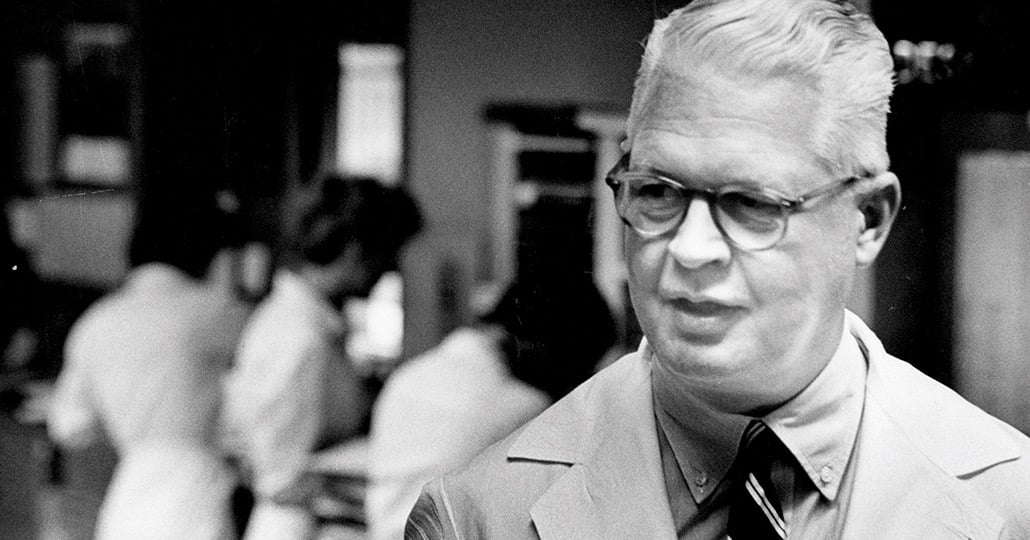THE 1950s
‘Everyone’s Father Figure’

While serving as Chair of the Board of Governors, Dr. Fay LeFevre continued to practice medicine part time. “It was … a great protective mechanism for me,” he said. “When things got too hot in the first-floor administrative offices … my patients were ready on the third floor. This gave me an ideal opportunity to excuse myself. Likewise, when some patients became too long-winded, I could politely say that an urgent problem had occurred in the administrative office that would require my immediate attention.” | Photo: Cleveland Clinic Archives
With a head for business and heart for caregiving, Fay LeFevre, MD, was a natural choice to helm the newly created Cleveland Clinic Board of Governors.
The revolutionary group, formed in December 1955 to give doctors a louder voice in hospital management, put daily operations of Cleveland Clinic in the hands of Dr. LeFevre — formerly Director of Education and Chair of the Department of Peripheral Vascular Disease — and half a dozen physicians tasked with overseeing the medical staff, patient relations and cost of treatment.
“His very appearance inspired confidence … tall, handsome, dignified, always impeccably groomed,” remarked a friend. Dr. LeFevre was “everyone’s father figure,” recalled another.
Under Dr. LeFevre’s leadership, the bold experiment paid off, paving the way for physicians to assume the role of Cleveland Clinic leaders.
Though his marriage to Mary Eaton, daughter of tycoon and philanthropist Cyrus Eaton, often landed him on the society pages, the unfailingly kind and polite Dr. LeFevre was popular with clinicians and clerical workers alike. The son of a Cleveland physician, a young LeFevre went on house calls with his father and learned an early lesson: patients weren’t a constellation of symptoms, but people deserving of empathy and attention.
During his 13-year tenure, pioneering doctors helped build Cleveland Clinic’s reputation as a heart hospital to the world. Dr. LeFevre brought his celebrated diplomacy to talks with the NAACP about the need for Black residents and interns; dedicated a $2 million education building; and sealed the deal on a $30 million expansion along Cleveland’s Carnegie Avenue that boasted a heliport. He retired in 1970, but remained a valued hospital emissary.
